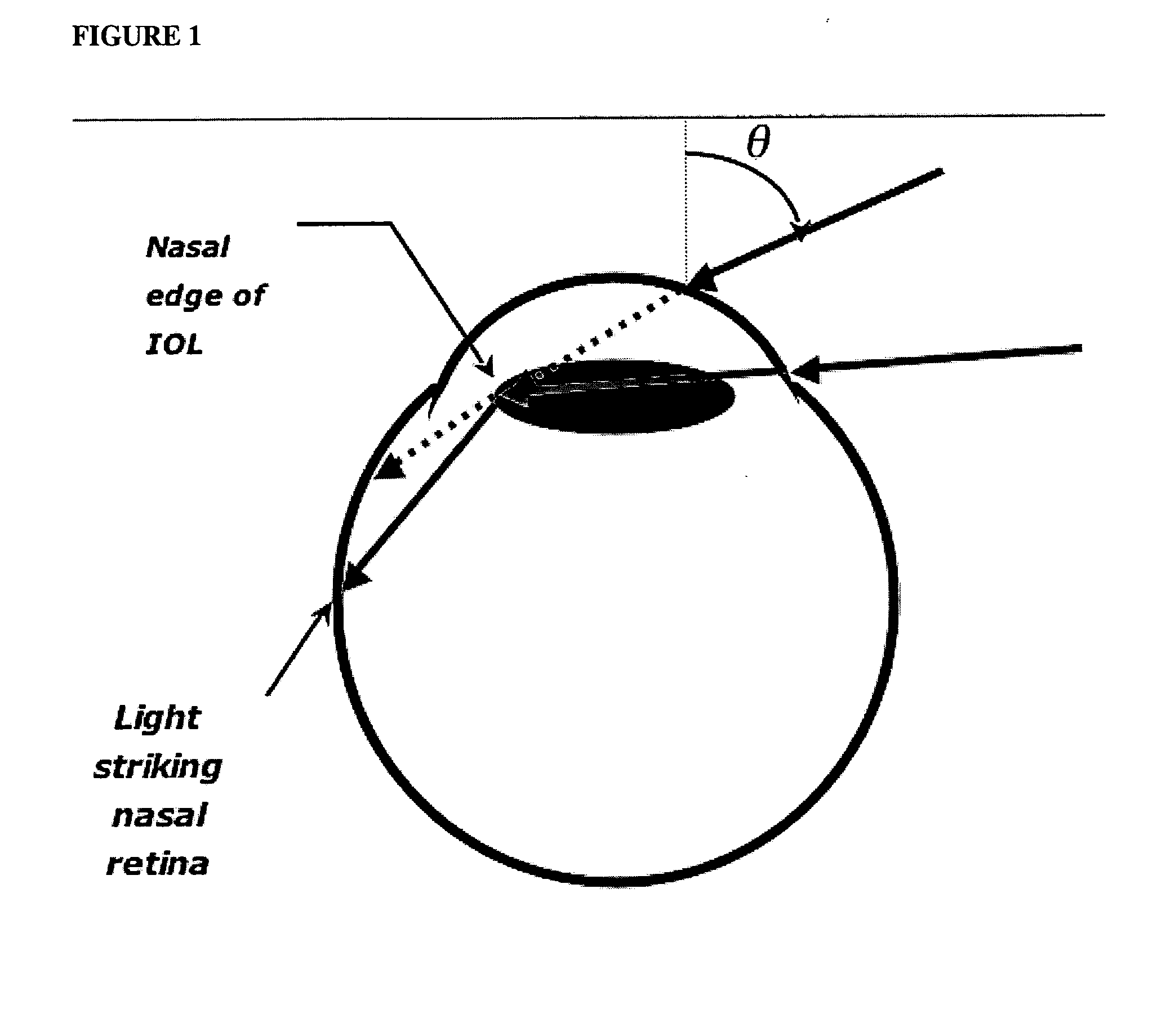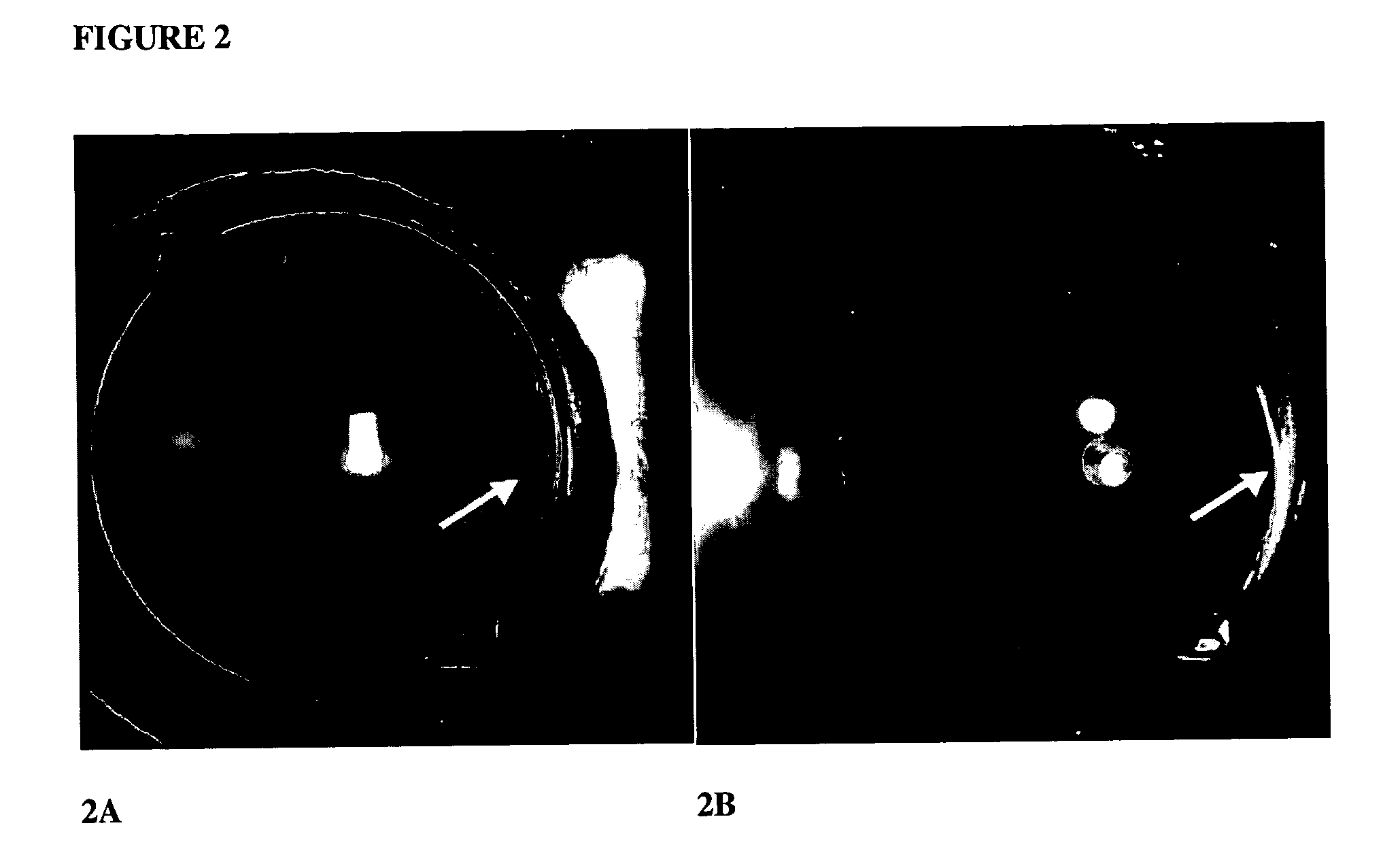Treatment of photic disturbances in the eye
a photic disturbance and eye technology, applied in the field of eye lenses, can solve the problems of adversely affecting the quality of vision in the pseudophakic eye, unexpected optical problems, and degrade vision, and achieve the effect of reducing or eliminating incident light photic disturbances
- Summary
- Abstract
- Description
- Claims
- Application Information
AI Technical Summary
Benefits of technology
Problems solved by technology
Method used
Image
Examples
example 1
[0042] Oblique Light Focusing and Pseudophakic Dysphotopsia
[0043]FIG. 1 shows oblique light striking an IOL at the nasal perimeter or edge and being focused into the eye striking nasal retina. Oblique light incident on the temporal limbus is concentrated at the nasal edge of the intraocular lens. Light rays continue forwards to strike the nasal retina at different areas depending on angle of incidence (Θ). FIG. 1 is based on the following experiments:
[0044] Clinical Observation
[0045] Using a hand held light source we have been able to induce PDP symptoms in 3 patients referred for second opinions who had developed PDP after having been implanted with square edged intraocular lenses. They described typical photic symptoms at the precise moment when a focus was formed at the nasal edge of their intraocular lens. FIG. 2 shows this focus formed with oblique incident light. FIG. 2A shows a square edged intraocular lens implanted in a 47-year old patient's right eye. Right: Off-axis li...
example 2
[0051] Case Studies
[0052] This study indicated that depending on the angle of incidence, several secondary images are formed from oblique light. Our findings indicate that some of the images have low intensity and yet may be noticed in photopic conditions. However, under scotopic conditions, such secondary images may become particularly noticeable to the patient and disturb vision.
[0053] The oblique light focusing explanation of pseudophakic dysphotopsia in the pseudophakic eye was confirmed with three pseudophakic patients. Using a peripherally placed penlight to focus light onto the nasal aspect of the intraocular lens we were able to precisely reproduce symptoms of arcs of light in the temporal visual field, especially at night.
[0054] An illustration of this new explanation for pseudophakic dysphotopsia in the pseudophakic eye shown in FIG. 6. Secondary images formed on the nasal retina by light bundles at angles of 65° (top panel), 85° (middle panel) and 92° (lower panel) inc...
PUM
 Login to View More
Login to View More Abstract
Description
Claims
Application Information
 Login to View More
Login to View More - R&D
- Intellectual Property
- Life Sciences
- Materials
- Tech Scout
- Unparalleled Data Quality
- Higher Quality Content
- 60% Fewer Hallucinations
Browse by: Latest US Patents, China's latest patents, Technical Efficacy Thesaurus, Application Domain, Technology Topic, Popular Technical Reports.
© 2025 PatSnap. All rights reserved.Legal|Privacy policy|Modern Slavery Act Transparency Statement|Sitemap|About US| Contact US: help@patsnap.com



